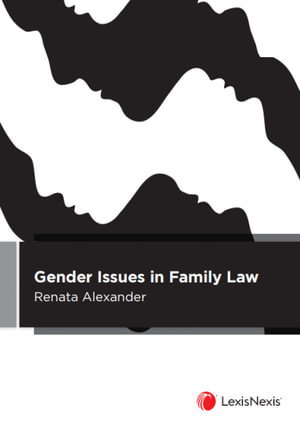There is no comprehensive analysis of the impact of gender in decision making 'inside' or 'outside' of Australia's family law system. Gender Issues in Family Law fills that gap. It primarily serves to provide a practical guide for key players and decision makers in family law such as lawyers, family consultants, family dispute resolution practitioners and judicial officers like registrars and judges. It is also a useful reference for academics and researchers.
Features
Explores the interaction between gender and family law in Australia
Draws on different schools of feminist and legal analysis to identify the underlying ideologies and demonstrate the use of gendered stereotypes and assumptions and any consequential bias for or against men and women
Chronicles the changes in Anglo-American custody law from near-absolute paternal rights to a maternal presumption and then to the current 'best interests of the child' principle
Looks at case law and legislation and focuses on the different factors used to determine best interests of a child in parenting cases such as conduct and fault, sexual preference, family violence and parenting capacity
Contains a large section on current legislation and reported case law regarding property settlement and the factors that the courts need to take into account such as the division of domestic labour, labour force participation, the economic consequences of separation and future needs
Examines the relevance of gender in the context of mediation which is now a popular and entrenched method of alternative dispute resolution in the Australian family law system
Related Titles
Serisier, Practising Family Law, 4th edition
Chisholm,Christie and Kearney, Annotated Family Law Legislation, 5th edition
Eastel (ed), Women and the Law in Australia


